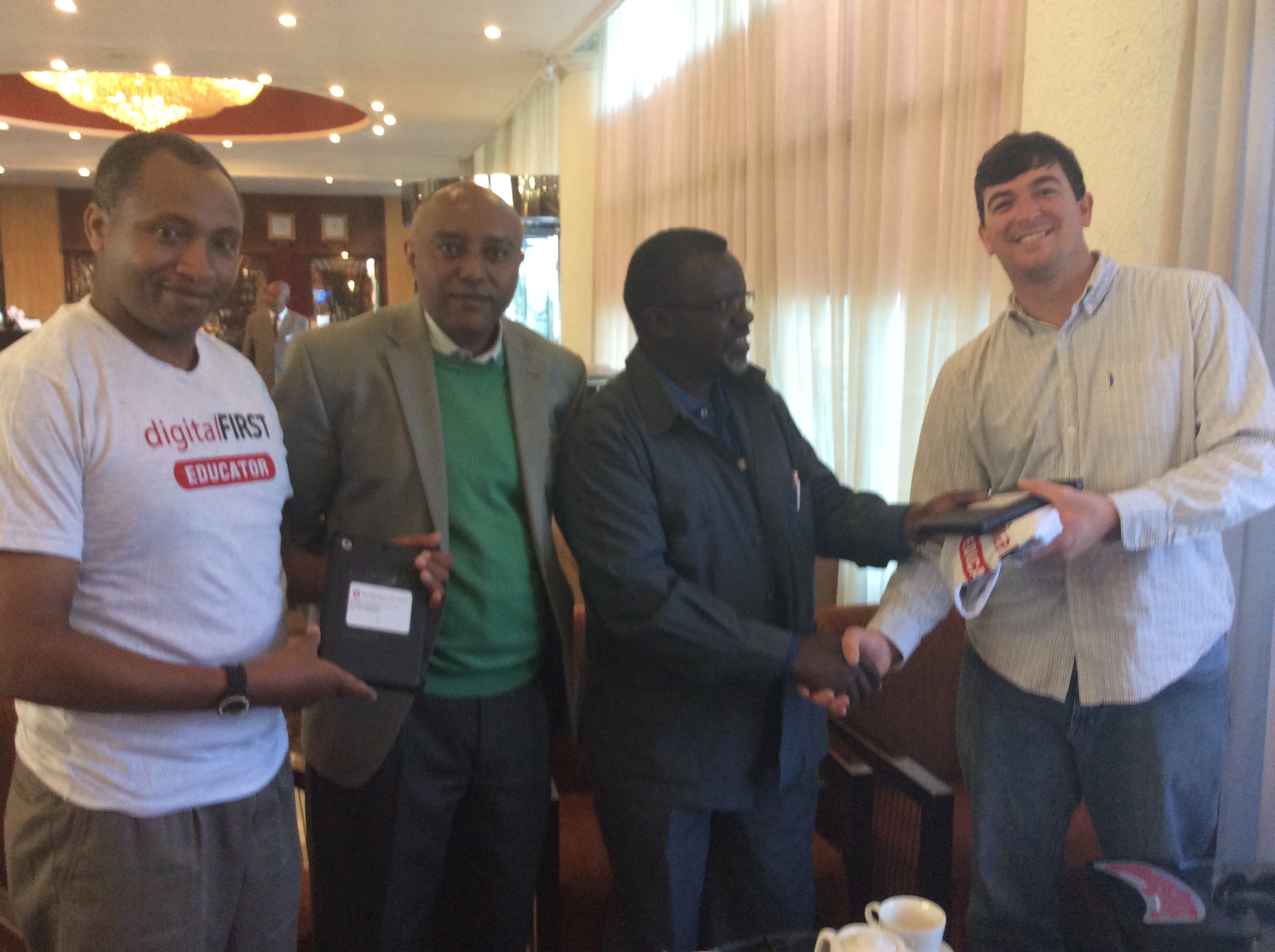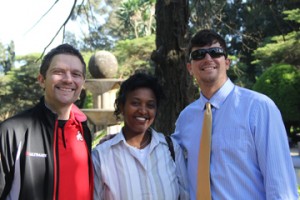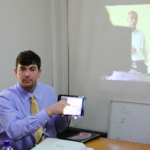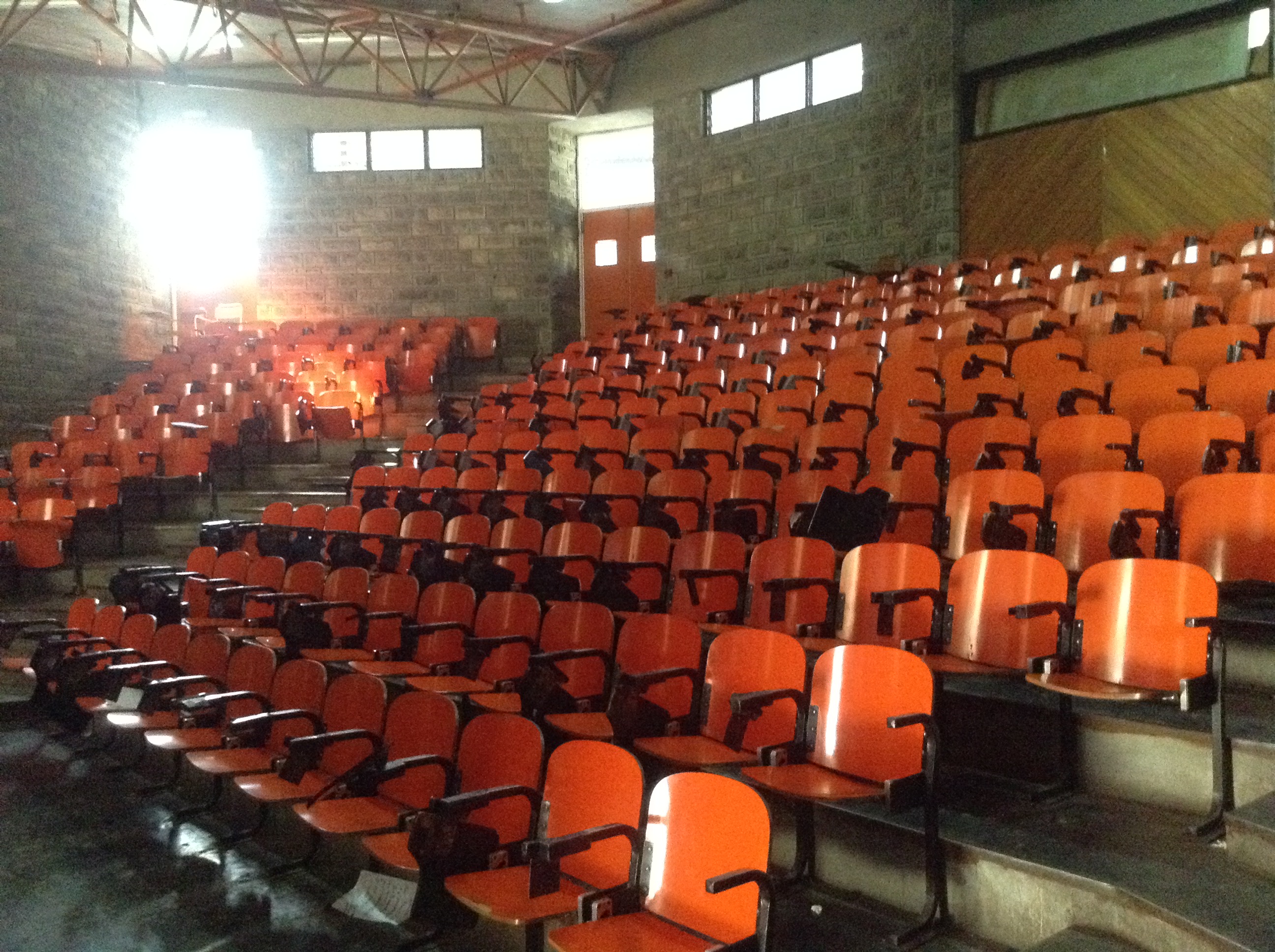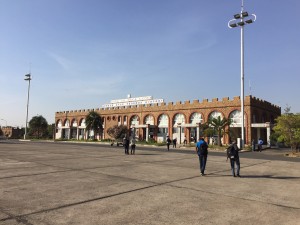It’s less than 48 hours before I head home from Ethiopia, and am spending my last day of work in Gondar fascinated and far from my comfort zone.
I have joined Dr. Shu-Hua Wang, tuberculosis expert from the Wexner Medical Center, as a guest in the Molecular Epidemiology class of One Health leader Dr. Wondwossen Gebreyes. I sit at the moderator table trying to appear professorial, even though the discussions of drug-resistant tuberculosis, HIV and rabies went pretty far over my head.
It is, however, fascinating to hear discussions of medical research and to be surrounded by such engaged and stimulating students who clearly want to make a difference in their community.
Equally fascinating, though slightly more overwhelming, was our visit last night to a slaughter plant just a short drive from our students’ hotel.
The goal had been to allow our vet students access to samples from the “specimens” at the plant for student research projects, but it ended up as more a field trip for our entire One Health crew.
We drove up a deeply rutted dirt road to the concrete facility, before piling out and donning plastic booties right outside the entrance.
It was dimly lit inside, but we had no trouble when we crossed the threshold immediately viewing the four steers that hung by their hind legs, as blood drained from their cut throats.
While workers skinned and dehooved the carcasses, preparing them for further butchering, we moved further into the facility toward the kill pen. There, a highly skilled knife wielder immobilized the animal with one stab and ended its life with another, in seconds.
Within a minute, it, too, was hanging and dripping, and headed for additional processing.
Our final stop was the veterinary office, where we examined the minimal, hand-written records kept on each animal, including notations of evident diseases like TB, necrosis and cirrhosis in the organs of many carcasses–organs that are removed and the meat moved along for consumption.
My veterinary friends were thoroughly engaged with their learning experience, but did repeatedly stop to ask if I, who has spent much of my life as the impartial journalistic observer, was OK.
I soon realize I was–and I was not.
It was not the carcasses overwhelming me–it was experiencing the moment that a living animal became a carcass that made my head pound and my heart ache.
Significant also was the fact this was one of few inspected slaughterhouses in the area, although certainly not the only place providing animals for human consumption. The others lack the sanitation and oversight we saw last night (even while we were there the vet refused to slaughter a steer who was sick).
That realization that made us all a little more quiet as we drove away.
I am more a chicken and fish eater than a beef consumer, but I recognize the importance of meat in the diet of many around the world–especially Ethiopia.
I believe, however, that everyone who eats any form of meat should be required to see from where it comes, to understand the contribution and sacrifice it takes to bring food to our tables.
Shu, Wondwossen and I ended our evening back at the Goha Hotel, sipping wine (and Fanta Orange), rehashing our experience, planning our remaining time in Gondar and preparing to head to Addis Ababa for more meetings. Rain washed away the day’s dirt and prepared the city and us for another dawn.
Laughter and good food among brilliant colleagues who have become good friends helped my heart and stomach to unclench.
We all ordered fish.





